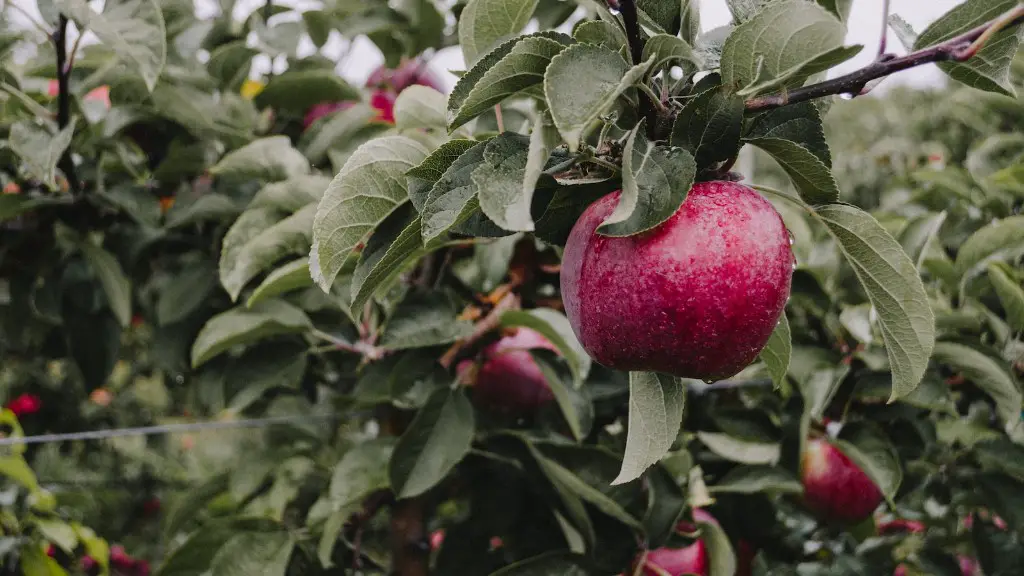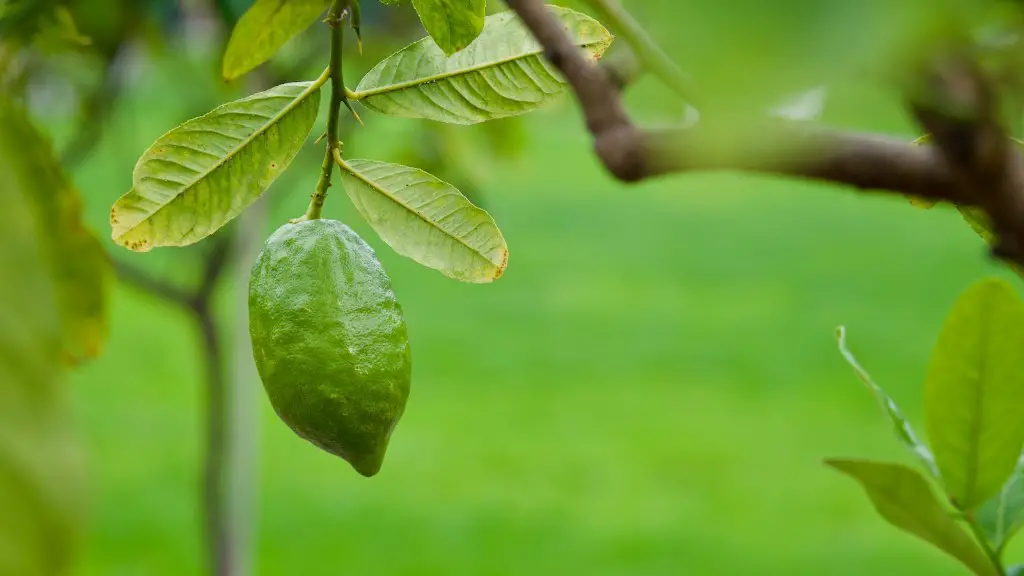Should I Repot My Lemon Tree?
Repotting a lemon tree is a great way to keep it healthy and happy.However, it is important to know when is the best time to do it.To reduce shock to the tree, it’s best to repot either in the early spring or right after harvesting.In addition, regular repotting helps manage root crowding, which can cause nutrient and water competition among the roots.
Before repotting, consider whether your lemon tree needs more space for its roots to spread out.If root bounding is present, then a new, larger pot should be chosen.In addition, make sure to add plenty of a slow-release fertilizer and quality soil that has excellent drainage.
In terms of pot size, it’s important to always choose one large enough to give the tree its best chance for success.A good guideline is to use a pot size that is twice the width of the lemon tree’s root ball.When repotting, be sure to break up any large chunks of soil that may be compacted and/or heavy.
Once the tree is repotted, it’s important to water it thoroughly.Monitoring the soil is essential, because it is important to keep the soil moist but not wet.In addition, make sure the lemon tree is getting adequate sunlight.It is best to keep it in an area that receives at least 6 hours of direct or indirect sunlight each day.
Lastly, it is important to be patient, because the lemon tree may take some time to adjust to the new pot.It is also important to check for any signs of disease or pests, such as yellowing or brown leaves, and take the appropriate measures if needed.
Reasons for Repotting Your Lemon Tree
Repotting a lemon tree has many advantages and is important for keeping the tree healthy and happy.The main reason for repotting is to give the roots more space, as a lemon tree’s roots can easily become crowded.Crowding can lead to a number of problems, such as nutrient and water shortages, as well as a lack of oxygen.These issues can lead to the lemon tree missing out on essential nutrients and water, which can have negative effects on the tree’s growth and health.
In addition, regular repotting ensures that the tree always has access to fresh soil, which is beneficial for providing the lemon tree with the nutrients it needs to thrive.Fresh soil can also add new minerals and microorganisms which help the tree grow.Furthermore, repotting can help ensure that the lemon tree’s soil is well-aerated, which can help improve the tree’s root and shoot development.
Finally, repotting your lemon tree can help prevent pests and diseases, as these can easily spread among overcrowded plants.By disturbing the root system and surrounding soil, the pests and diseases may be removed and the lemon tree can start fresh.
Choosing the Right Pot Size
When repotting a lemon tree, an important factor to consider is the pot size.It is important to choose a pot large enough to give the lemon tree room to develop and spread its roots.In general, you should use a pot size that is twice the width of the lemon tree’s root ball.This will provide plenty of room for the tree to grow and will ensure that the roots don’t become crowded.
It is also important to consider the pot material.You should choose a pot made of a material that is strong and durable, such as plastic or clay.These types of pots will provide adequate drainage and allow for adequate root development.In addition, make sure that you select a pot with proper drainage holes.This will help keep the lemon tree’s soil from becoming overly saturated and will improve air circulation.
Finally, when choosing pot sizes, it is important to keep in mind that lemon trees prefer a slightly smaller pot size than some other types of plants.This is because a smaller pot size encourages slower growth and allows the roots to breathe.In addition, smaller pots tend to retain moisture better, which helps make watering easier and allows the tree to get the nutrients it needs.
Fertilizing and Watering Tips when Repotting a Lemon Tree
When repotting a lemon tree, it is important to use a slow-release fertilizer and quality soil that has good drainage.It is also important to consider how often the tree will need to be fertilized.Generally, it is best to fertilize the tree every six to eight weeks.A slow-release fertilizer will ensure that the tree gets the nutrients it needs over the course of a month or two, without the need for frequent applications.
It is also important to know how much to water when repotting a lemon tree.In general, it is best to water the soil until it is moist but not soggy.It is also important to keep track of the soil’s moisture level and water the tree when needed.When watering the tree, it is important to make sure that the water is evenly dispersed throughout the soil.An easy way to do this is to water the tree from the top and let the water run down the sides of the pot.
Finally, when watering your lemon tree, you should use lukewarm water as cold water can shock the tree.In addition, you should avoid getting the tree’s leaves wet, as this can lead to fungus and other diseases.If you must water the leaves directly, use a mister or gentle spray nozzle and make sure that the water does not sit on the leaves.
Signs that Your Lemon Tree Needs Repotting
If your lemon tree has outgrown its pot or its roots have become crowded, it is important to repot it.Repotting helps manage root growth and can prevent nutrient and water shortages.In addition, regular repotting ensures that the tree has access to fresh soil and minerals which helps it grow and flourish.
There are a few signs that can help you identify when it is time to repot your lemon tree.One of the most obvious signs is if the lemon tree has outgrown its pot.If the tree is rising out of the container, is starting to look deformed or has roots growing out of the drainage holes, then it is time to repot it.
In addition, if you notice that the soil is becoming waterlogged or is hard and compacted, then this is a sign that the lemon tree needs repotting.If the soil is not draining properly, then the roots are not getting the oxygen they need to grow.Furthermore, if the roots appear tangled and/or have started to circle around the pot, then it is time to repot.
Finally, if the lemon tree is not producing as much fruit or is not as vibrant as it used to be, then it may be a sign that it needs repotting.Make sure to monitor for any signs of disease or pests, such as yellowing or brown leaves, and take the appropriate measures if needed.
Preparing the Soil when Repotting
Before repotting a lemon tree, it is important to prepare the soil.When preparing the soil, it is important to break up any large chunks of soil that may be compacted and/or heavy.A good way to do this is to use a spade, fork or trowel to break up the soil until it is nice and loose.
It is also important to add a slow-release fertilizer and quality soil that has excellent drainage.For best results, use a potting mix specifically for citrus trees.This type of soil will ensure that the tree has the nutrition it needs to thrive.In addition, make sure to incorporate plenty of organic matter such as aged compost or aged manure into the soil.Organic matter will help improve the soil’s texture and drainage, as well as provide essential nutrients and minerals to the lemon tree.
Finally, make sure to provide adequate drainage by adding a layer of pebbles or gravel to the bottom of the pot before adding the soil.This will help the water drain away from the roots, preventing root rot and other diseases.
Positioning the Tree when Repotting
When repotting a lemon tree, it is important to make sure that the tree is placed correctly in the new pot.It is important to make sure that the tree is centered in the pot to provide adequate support and eliminate any risk of tipping.
It is also important to make sure that the tree is at the same depth in the pot as it was in the old pot.If the tree is planted too deeply, then it can suffer from root rot.On the other hand, if the tree is planted too shallow, then there is a risk of the tree becoming top heavy and tipping over when it is mature.
Finally, when positioning the tree, it is important to make sure that the soil is not too tightly packed around the roots.This restricts the root’s ability to spread out and can lead to nutrient and water competition among the roots.




